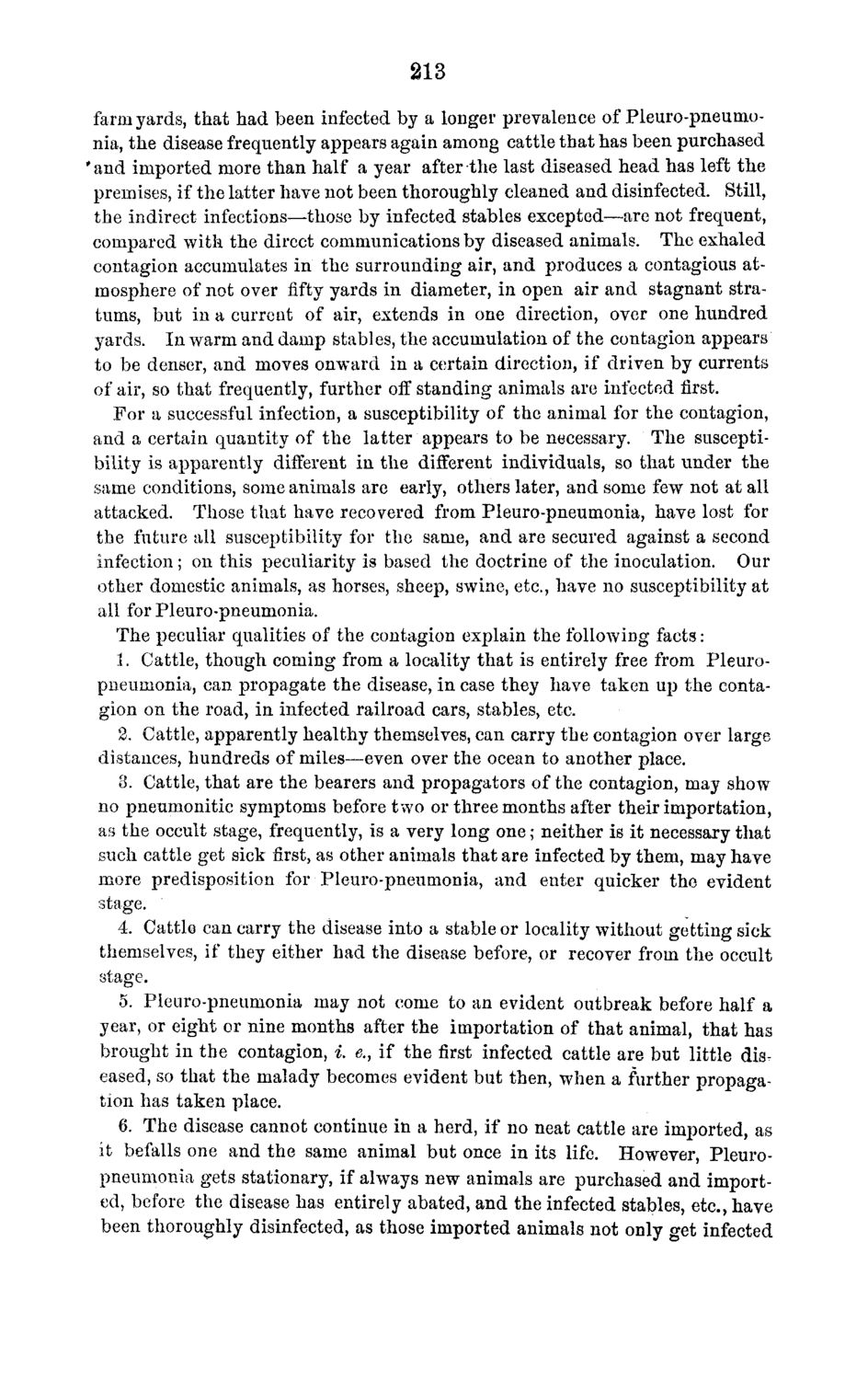| |
| |
Caption: Board of Trustees Minutes - 1870
This is a reduced-resolution page image for fast online browsing.

EXTRACTED TEXT FROM PAGE:
213 farmyards, that had been infected by a longer prevalence of Pleuro-pneumonia, the disease frequently appears again among cattle that has been purchased 'and imported more than half a year after the last diseased head has left the premises, if the latter have not been thoroughly cleaned and disinfected. Still, the indirect infections—those by infected stables excepted—are not frequent, compared with the direct communications by diseased animals. The exhaled contagion accumulates in the surrounding air, and produces a contagious atmosphere of not over fifty yards in diameter, in open air and stagnant stratums, but in a current of air, extends in one direction, over one hundred yards. In warm and damp stables, the accumulation of the contagion appears to be denser, and moves onward in a certain direction, if driven by currents of air, so that frequently, further off standing animals are infected first. For a successful infection, a susceptibility of the animal for the contagion, and a certain quantity of the latter appears to be necessary. The susceptibility is apparently different in the different individuals, so that under the same conditions, some animals are early, others later, and some few not at all attacked. Those that have recovered from Pleuro-pneumonia, have lost for the future all susceptibility for the same, and are secured against a second infection; on this peculiarity is based the doctrine of the inoculation. Our other domestic animals, as horses, sheep, swine, etc., have no susceptibility at all for Pleuro-pneumonia. The peculiar qualities of the contagion explain the following facts : 1. Cattle, though coming from a locality that is entirely free from Pleuropneumonia, can propagate the disease, in case they have taken up the contagion on the road, in infected railroad cars, stables, etc. 2. Cattle, apparently healthy themselves, can carry the contagion over large distances, hundreds of miles—even over the ocean to another place. 8. Cattle, that are the bearers and propagators of the contagion, may show no pneumonitic symptoms before two or three months after their importation, as the occult stage, frequently, is a very long one; neither is it necessary that such cattle get sick first, as other animals that are infected by them, may have more predisposition for Pleuro-pneumonia, and enter quicker the evident stage. 4. Cattle can carry the disease into a stable or locality without getting sick themselves, if they either had the disease before, or recover from the occult stage. 5. Pleuro-pneumonia may not come to an evident outbreak before half a year, or eight or nine months after the importation of that animal, that has brought in the contagion, i. e., if the first infected cattle are but little diseased, so that the malady becomes evident but then, when a further propagation has taken place. 6. The disease cannot continue in a herd, if no neat cattle are imported, as it befalls one and the same animal but once in its life. However, Pleuropneumonia gets stationary, if always new animals are purchased and imported, before the disease has entirely abated, and the infected stables, etc., have been thoroughly disinfected, as those imported animals not only get infected
| |